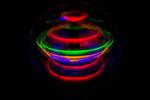Other

“A quantum computer slowed simulated molecular quantum effects by a billion times, allowing researchers to directly measure them for the first time. Researchers at Duke University have implemented a quantum-based method to observe a quantum effect in the way light-absorbing …

“A team of researchers at Duke University and their collaborators have uncovered the atomic mechanisms that make a class of compounds called argyrodites attractive candidates for both solid-state battery electrolytes and thermoelectric energy converters. The discoveries — and the machine learning …

“Engineers at Duke University have produced the world’s first fully recyclable printed electronics that replace the use of chemicals with water in the fabrication process. By bypassing the need for hazardous chemicals, the demonstration points down a path industry …

“Tuning a quantum computer’s measurement rate provides hints of quantum phase transition. Researchers at Duke University and the University of Maryland have used the frequency of measurements on a quantum computer to get a glimpse into the quantum phenomena …

“Leveraging electron spin adds a new dimension to data encoding. Remember flip-phones? Our smartphones may one day look just as obsolete thanks to spintronics, an incipient field of research promising to revolutionize the way our electronic devices send and receive …

“Newly proven physics opens chalcogenide glasses to applications at visible and ultraviolet wavelengths. Electrical engineers at Duke University have discovered that changing the physical shape of a class of materials commonly used in electronics and near- and mid-infrared photonics—chalcogenide …

“Acoustoelectronic tweezers gently manipulate biological nanoparticles just a few nanometers wide Engineers at Duke University have devised a system for manipulating particles approaching the miniscule 2.5 nanometer diameter of DNA using sound-induced electric fields. Dubbed “acoustoelectronic nanotweezers,” the approach …

“Electronics-free DraBot uses air pressure, microarchitectures and self-healing hydrogels to watch for changes in pH, temperature and oil Engineers at Duke University have developed an electronics-free, entirely soft robot shaped like a dragonfly that can skim across water and react …

“New technique reclaims nearly 100% of all-carbon-based transistors while retaining future functionality of the materials Engineers at Duke University have developed the world’s first fully recyclable printed electronics. By demonstrating a crucial and relatively complex computer component — the transistor …

“Plasmonic speed enhancements previously constrained to nanoscale phenomena are replicated on macroscopic devices Visible and infrared light can carry more data than radio waves, but has always been confined to a hard-wired, fiber-optic cable. Working with Facebook’s Connectivity Lab …

